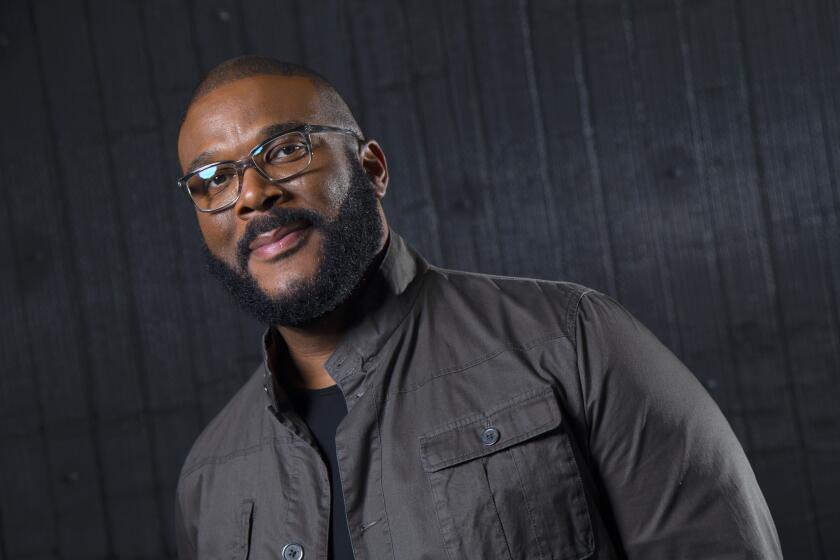Mel Bochner re-creates a 1991 show for Marc Selwyn Fine Art
- Share via
The floor sculptures that Mel Bochner made in the early 1970s now rank as classics of conceptual art. Arrangements of stones, coins and on occasion hazelnuts on the ground, they were designed to lay bare the first principles of sculpture.
“I was trying to find out what the minimum definition of a sculpture was — what could be a sculpture and only a sculpture. It has to be three-dimensional,” the artist said, reached by phone in New York. “And I wanted it to be a useless thing. A lot of pebbles you could put in your driveway; an individual pebble has no exchange value.” To complete these bare-bone sculptures, he would engage in some organizing operation, such as numbering the stones or arranging them to demonstrate a mathematical theorem.
Now, for a show at Marc Selwyn Fine Art in L.A., Bochner is remaking 10 of these groundbreaking works but out of brilliantly colored glass fragments instead. “Color changes everything,” he said. “The early work had an emphasis on aspects of thought and order. Once you add color, it takes you into another realm: the realm of perception.”
The L.A. show, which opens March 17, re-creates a 1991 show that took place in the Sergio Casoli gallery in Milan, Italy, and that was inspired by a discovery made in that space. Painter Lucio Fontana had used the space as his studio and had before his death left a box of colored glass pieces in a back room — glass typically crushed and worked into the surface of his paintings.
Bochner said he can remember the moment he lifted the lid of the box and saw the uncrushed, fist-sized pieces of glass. “I had always wanted to make my early work in color, but I couldn’t figure out how to do that,” he said. “Right then I said to Sergio [Casoli], give me some glass and I’ll give you a show.”
Upon learning about this work a couple of years ago, Marc Selwyn immediately asked Bochner about revisiting the show. But the artist didn’t know the whereabouts of Casoli or the glass, and attempts to have similar glass manufactured in the U.S. led nowhere. Finally, Selwyn tracked down Casoli through an Italian curator he once worked with at Sotheby’s.
Apart from one sculpture that had been sold, the Italian dealer “had packed up my whole show in a funky little gym bag,” Bochner said. Each piece of glass was wrapped in 1991 pages from the Corriere della Sera newspaper.
The new show, made with the old glass, marks the first time a group of Bochner’s floor sculptures has been assembled in L.A. It will also serve as a teaser for a show opening at the Whitechapel Gallery in London in October, focusing on Bochner’s use of color.
More to Read
The biggest entertainment stories
Get our big stories about Hollywood, film, television, music, arts, culture and more right in your inbox as soon as they publish.
You may occasionally receive promotional content from the Los Angeles Times.










